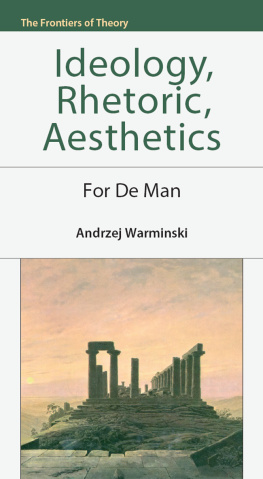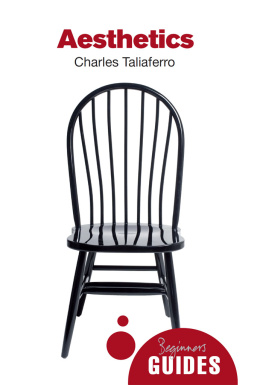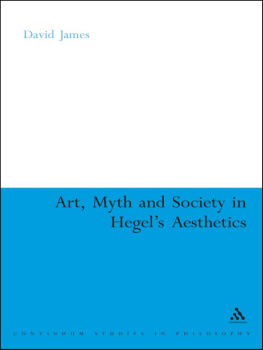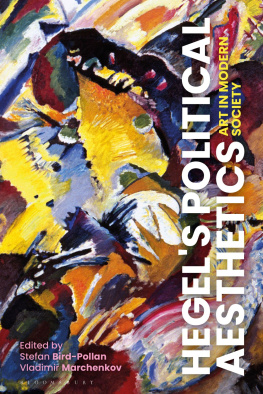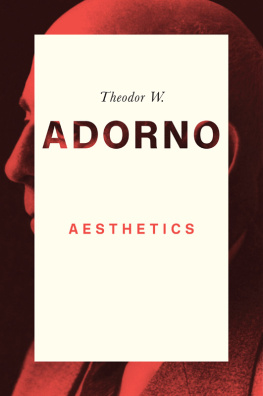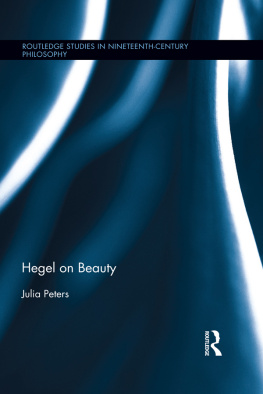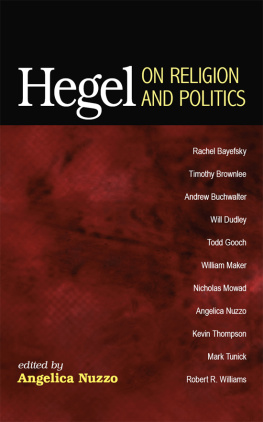
INTRODUCTORY LECTURES ON AESTHETICS
GEORG WILHELM FRIEDRICH HEGEL was born in Stuttgart in 1770. In terms of cultural influence, he is the most important of modern philosophers, not only because of his relation to Marx and of the support his philosophy seemed to offer to European theories of nationalism and social democracy, but also because of his impact on the whole range of humanities. He published four major works in his lifetime: The Phenomenology of Spirit (1807), The Science of Logic (181216), The Encyclopaedia of the Philosophical Sciences (1817) and The Philosophy of Right (1821). But his reputation and influence also depend on his lectures, which were published posthumously by his friends and pupils. He was educated at the Tbingen theological seminary, where Hlderlin and Schelling were among his friends, and in 1801 he settled in Jena as an unsalaried lecturer. He completed The Phenomenology of Spirit in October 1806, on the night before the Battle of Jena, in which Napoleons victory put an end to the Holy Roman Empire (and temporarily closed the University). Over the next ten years Hegel was for a short time editor of a Napoleonic newspaper in Bamberg, and then headmaster of the Nuremberg high school. In 1811 he married Marie von Tucher. In 1816 he became professor of philosophy at Heidelberg University, and in 1818 was appointed to the chair at Berlin. He died in 1831.
BERNARD BOSANQUET was born in 1848 in Northumberland and educated at Harrow and Balliol College, Oxford. He became a Fellow of University College, Oxford, in 1870, teaching philosophy and ancient history. In 1881 he moved to London and devoted himself to charitable work, adult education and philosophical writing. From 1903 to 1908 he held the chair of moral philosophy at St Andrews. Bosanquet helped, along with F. H. Bradley and T. H. Green, to revive Hegelianism in England, and tried to apply it to social and political problems. He died in London in 1923. His works include Knowledge and Reality (1885), Logic or the Morphology of Knowledge (1888), History of Aesthetic (1892), and his Gifford lectures, The Principle of Individuality and Value (1912) and The Value and Destiny of the Individual(1913).
MICHAEL INWOOD was born in London in 1944 and educated at Alleyns School and University College, Oxford. Since 1967 he has been Fellow and Tutor in philosophy at Trinity College, Oxford. His books include Hegel (1983), A Hegel Dictionary (1992), Heidegger (1997) and A Heidegger Dictionary (1999). He is married to the classical scholar Christiane Sourvinou-Inwood.
GEORG WILHELM FRIEDRICH HEGEL
Introductory Lectures on Aesthetics
Translated by
BERNARD BOSANQUET
Edited with an Introduction and Commentary by
MICHAEL INWOOD
PENGUIN BOOKS
PENGUIN BOOKS
Published by the Penguin Group
Penguin Books Ltd, 80 Strand, London WC2R 0RL,England
Penguin Group (USA), Inc., 375 Hudson Street, New York, New York 10014, USA
Penguin Books Australia Ltd, 250 Camberwell Road, Camberwell, Victoria 3124, Australia
Penguin Books Canada Ltd, 10 Alcorn Avenue, Toronto, Ontario, Canada M4V 3B2
Penguin Books India (P) Ltd, 11 Community Centre, Panchsheel Park, New Delhi 110 017, India
Penguin Books (NZ) Ltd, Cnr Rosedale and Airborne Roads, Albany, Auckland, New Zealand
Penguin Books (South Africa) (Pty) Ltd, 24 Sturdee Avenue, Rosebank 2196, South Africa
Penguin Books Ltd, Registered Offices: 80 Strand, London WC2R 0RL,England
www.penguin.com
This translation first published as The Introduction to Hegils Phtiosopky of Fine Art 1886
This edition first published 1993
Reprinted with a new Chronology and Further Reading 2004
16
Editorial material copyright Michael Inwood, 1993, 2004
The moral right of the editor has been asserted
All rights reserved
Except in the United States of America, this book is sold subject
to the condition that it shall not, by way of trade or otherwise, be lent,
re-sold, hired out, or otherwise circulated without the publishers
prior consent in any form of binding or cover other than that in
which it is published and without a similar condition including this
condition being imposed on the subsequent purchaser
EISBN13: 9780141915616
Contents

INTRODUCTORY LECTURES ON AESTHETICS
CHAPTER I
The Range of Aesthetic Defined, and Some Objections against the Philosophy of Art Refuted [316]
CHAPTER II
Methods of Science Applicable to Beauty and Art [1726]
CHAPTER III
The Conception of Artistic Beauty [2761]
CHAPTER IV
Historical Deduction of the True Idea of Art in Modern Philosophy [6275]
CHAPTER V
Division of the Subject [7697]
Introduction

Georg Wilhelm Friedrich Hegel was born in 1770 and died in 1831. In his lifetime German art reached heights that it had never attained before. Historians, critics and artists gained a new awareness of the art of the past. Aesthetics became a distinct and flourishing branch of philosophy. Philosophers assigned art a high position in the order of things, seeing it as one of humanitys supreme attainments, if not (as Hegel held) the self-revelation of God or of the absolute. And yet Hegel seems to argue that art is coming to an end. It is this paradox that I hope, in this Introduction, to explain.
Art in Hegels Germany
Hegel was born in Stuttgart, the capital of the duchy of Wrttemberg, one of the many small states into which Germany was then divided. Germany was at that time dispersed and oppressed, ruled for the most part by petty autocrats and subject to invasions by foreign armies. But political abasement was compensated for by intense cultural creativity. Until fairly late in the eighteenth century Germany had no literature comparable to those of France, England and Italy. By the time of Hegels death it had a great national literature. The major force was Johann Wolfgang von Goethe (17491832). He contributed to virtually every sphere of literature poetry, drama, the novel, autobiography, criticism and (less successfully) to the natural sciences. Hegel knew Goethe well and often visited him in Weimar. The accomplishments of Friedrich von Schiller (17591805) were equally wide-ranging: poems, plays and stories, as well as writings on art that had a great impact on Hegel. At the theological college at Tbingen, which Hegel attended from 1788 to 1793, he formed a close friendship with a third great writer, Friedrich Hlder-lin (17701843), a lyric poet, novelist and dramatist whose career was cut short by madness in about 1803. But the greatest artistic achievements of the period were in music: Mozart, Haydn, Schubert, Weber and Beethoven (born in the same year as Hegel, but never mentioned by him) were active in Hegels lifetime.
Hegels age was one of immense creativity; but it did not always seem so at the time. Not only Hegel, but Friedrich Wilhelm Joseph von Schelling (17751854) another friend of Hegels from the Tbingen college saw the age as one of artistic poverty. This belief had several sources. First, music, the one art in which modern Germany surpassed ancient Greece and every other nation and period, was in general not highly valued. Schopenhauer, in his World as Will and Idea of 1819, regarded music as the supreme art, but he was ignored until well after Hegels death, when music


